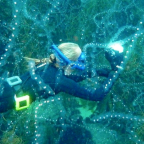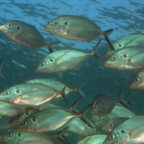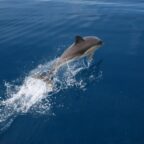Endangered Australian fish being sold in shops and restaurants
June 25, 2020
Posted in News

Endangered fish species are being routinely sold to Australian and international consumers thanks to a little-known feature of environmental laws that allows for the species to be commercially fished. Under Australian environmental laws, marine species that are listed as vulnerable, endangered or critically endangered are classified as “no take” species, meaning they cannot be sold or exported.
But species such as blue warehou, eastern gemfish and scalloped hammerhead, which are eligible for listing, are instead categorised as “conservation dependent”, meaning they can be caught in Australian waters and sold in shops, fish markets and restaurants, or exported, despite being considered threatened.
Marine conservationists have long argued for the removal of this category from Australia’s national environment laws – the Environment Protection and Biodiversity Conservation (EPBC) Act – but its existence has flown beneath the radar for most seafood consumers.
“Most people assume that everything caught in Australia is sustainable,” said Tooni Mahto, a marine biologist and a campaign manager for the Australian Marine Conservation Society.
“People work on the assumption that anything endangered is not for sale.”
Nicola Beynon of Humane Society International said the category was there for “political expediency”.
“It’s a special category just for commercially fished species to avoid giving them protection that they actually qualify for because they’re commercially valuable,” Beynon said.
With the EPBC Act currently subject to a once-in-a-decade review led by the former competition watchdog chair Graeme Samuel, the AMCS has again called for the conservation dependent category to be axed.
It’s one of a string of problems Guardian Australia has reported on that highlight how the act is failing to stem what scientists say is an extinction crisis.
The federal environment department said species determined to be “conservation dependent” are monitored annually and the threatened species scientific committee received annual updates on population numbers. A spokesperson said the category worked effectively because it allowed for continued commercial harvest while also rebuilding fish populations.
But in a submission to the Samuel review, the committee itself said the category needs urgent reform and that it masks the actual conservation status of a species.
Currently, eight marine species are listed as conservation dependent.
They include the blue warehou, which qualified for a critically endangered listing but was listed as conservation dependent in 2015. It occurs in a multi-species trawl fishery off south-east Australia.
Southern bluefin tuna, a high-value export product that is managed through an intergovernmental commission, also qualified for a critically endangered listing. The species recovered somewhat in recent years (from 5% of historical levels to 17%), but population numbers are still low.
The eastern gemfish, which qualified for an endangered listing, has continued to decline under a rebuilding strategy and remains classified as overfished.
Other species on the list are the orange roughy (or deep sea perch), the school shark, Harrisson’s dogfish and the southern dogfish.
“We’re not seeing recovery and in some cases we’re seeing decline,” Mahto said.
She said the conservation dependent category meant certain ocean species were treated differently to threatened species on land.
“The systemic problem is the conservation dependent category doesn’t work,” she said.
“If the object of the Act is ecological sustainability and protection of the environment, then why are species of fish treated differently to any other species under the Act and why are they managed differently?
“There’s no ecological reason, there’s only an economic reason.”
The Humane Society International is the main organisation in Australia to nominate species for a listing under national environmental law.
It nominated several marine species for protection that were ultimately listed in the conservation dependent category.
One of those is the scalloped hammerhead, which qualified for an endangered listing but was given a conservation dependent status in 2018 after a six-year effort by the HSI to have it listed for protection.
Scalloped hammerheads are critically endangered on the International Union for the Conservation of Nature’s red list. In Australia they are fished both for their fins, which are sold into export markets, and meat. They are also often caught as bycatch in multi-species fishing operations.
Much of this fishing occurs off northern and north-east Australia, including inside the Great Barrier Reef Marine Park.
Under the laws governing the marine park, even a species listed as conservation dependent is automatically protected from commercial exploitation.
But in 2018 the then environment minister, Josh Frydenberg, amended reef regulations to allow for the catch of scalloped hammerheads within the world heritage area.
“They’re an endangered species caught in the Great Barrier Reef. It’s hugely frustrating,” said Beynon, the head of Australian campaigns at HSI.
“They’re putting the commercial value above its conservation.”
The environment department’s spokesperson said the threatened species scientific committee was working with the Queensland and Northern Territory governments to ensure they implemented management measures for the scalloped hammerhead.
Source
















Social Profiles